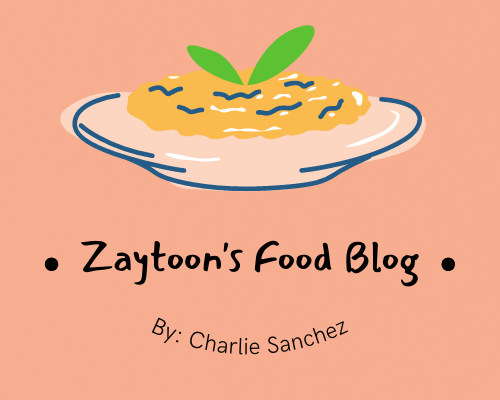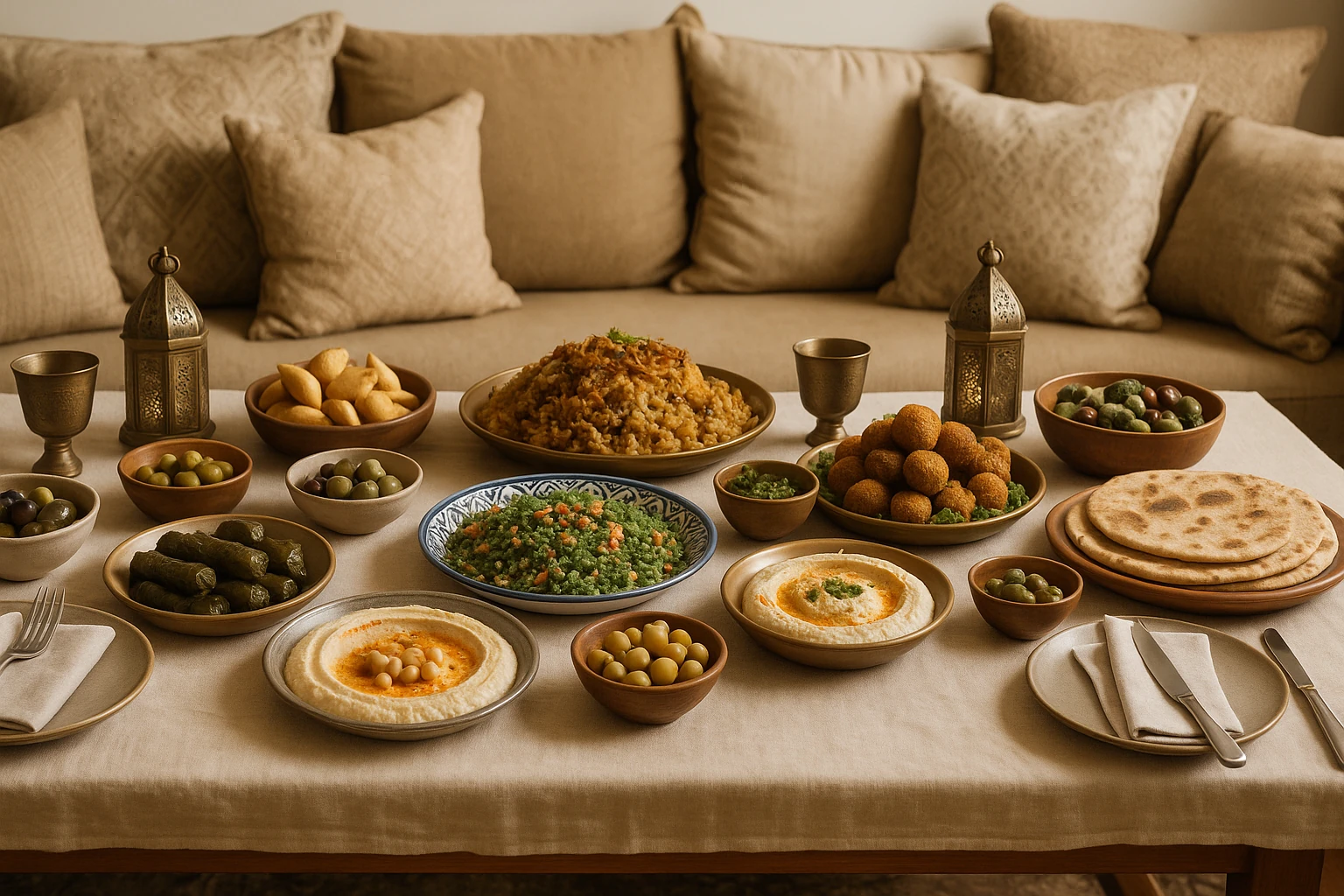Have you ever experienced the magic of a Middle Eastern home? Middle Eastern hospitality greets you with genuine warmth and instant belonging. Within moments, they make you feel like you are one of their own.
The Middle Easterners are deeply connected to their ancient roots. For example, if you refuse even a simple drink, they might get offended. Seems odd, right?
Drawing from our experience, this cultural approach to offering hospitality creates bonds that last a lifetime. In Middle Eastern culture, their hospitality is not simply an act of politeness but a sacred duty passed down through generations.
Basically, the warmth you feel isn’t accidental. Every gesture follows traditions ingrained in thousands of years of history.
Do you want to experience it yourself? Then, stick around to know how you can create similar unforgettable gatherings.
Simple Ways to Revamp Your Dining Space
You don’t need fancy décor to create magic. Middle Eastern hosts focus on comfort over showiness, and that’s what makes their guests feel truly welcome.
Four areas where small adjustments create noticeable impact:
Warm Light Sets the Mood
Pick up some soft table lamps or candles to create that cozy glow. Aim for warm yellow or amber lighting instead of bright white bulbs. A softer light choice makes people’s skin look healthier and helps everyone relax their shoulders.
Middle Eastern homes often feature warm, golden lighting that makes everyone look better and feel more at ease around the dinner table.
Arrange Seating for Real Connection
Floor cushions and low tables encourage people to get closer naturally. You can find beautiful cushions in rich colors like deep red or golden yellow at most home stores.
If floor seating isn’t practical for your space, arrange chairs in a circle rather than formal rows. The goal is to help your guests actually see each other’s faces and share stories more easily.
Simple Touches Worth Adding
You don’t need expensive art to warm up your space. Add a few colorful textiles like woven table runners or throw pillows in earthy tones. Another great option is placing small potted herbs like mint or basil around the room. These smell wonderful, and guests can even use them in their food.
Sometimes a simple wooden bowl filled with fresh dates or mixed nuts creates more warmth than elaborate centrepieces ever could.
Clear Paths for Easy Flow
Remove obstacles between your kitchen and dining area before guests arrive. Start by pushing extra chairs against the walls and clearing countertops of unnecessary items.
Once you have clear walkways, you can move like Middle Eastern hosts do. They want to move freely between cooking and serving while keeping conversations flowing with their guests throughout the meal. This smooth movement makes hosting feel effortless rather than stressful.
With your space feeling right, the real magic happens with food selection.
Building Your Middle Eastern Menu
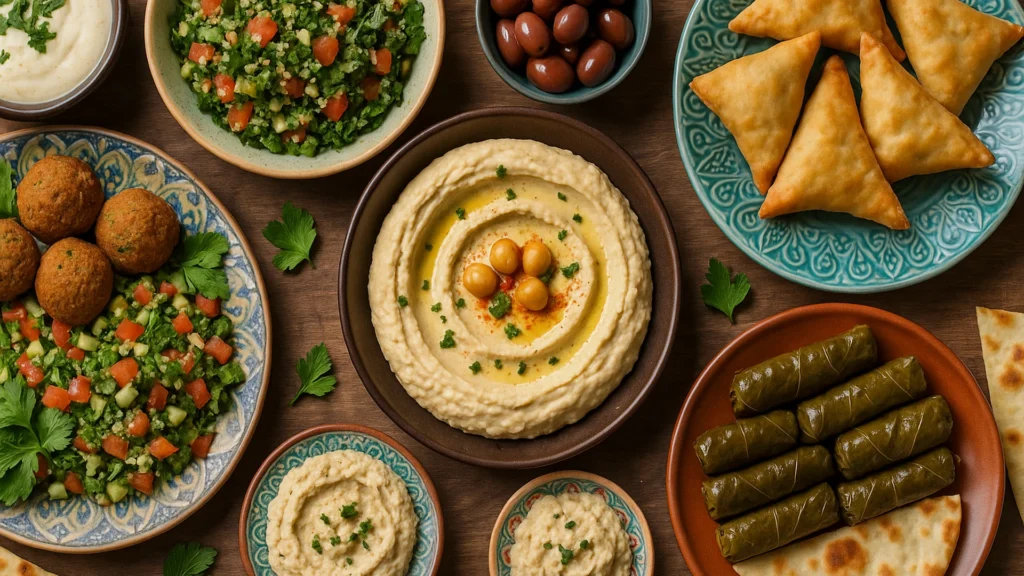
Believe it or not, the beauty of Middle Eastern dining lies in abundance. It’s because they say your guests should see more food than they can eat. This approach isn’t wasteful. Instead, it shows generous hospitality and deep respect for everyone at your table.
However, good menu planning starts with understanding mezze culture. These small dishes let people taste different flavors without committing to huge portions.
For beginners, start with five to seven dishes. You’ll want something creamy like hummus paired with something crunchy like fresh vegetables. Then add something warm like soup or a pasta dish to round out the flavors. Crusty bread for scooping ties everything together and gives you the foundation of a memorable meal.
Each recipe tells stories about where it comes from. As guests taste each dish, they experience flavors from different countries. It’s like taking a food journey without leaving your dining room.
This approach works so well because food has a way of bringing strangers together naturally.
Hosting with Food Across Cultures
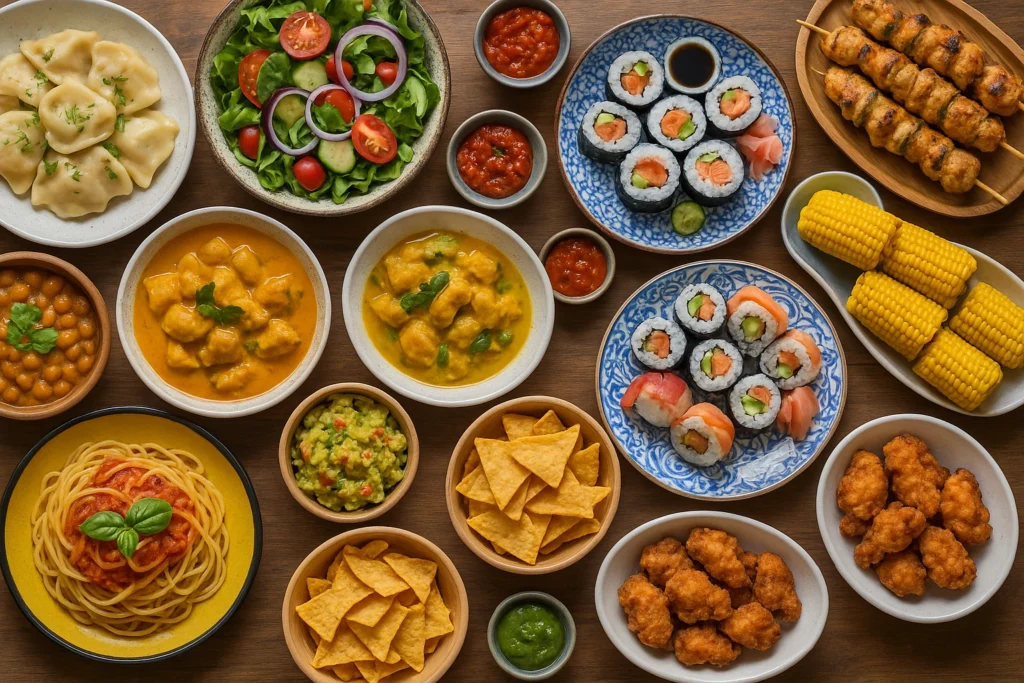
Sharing food across cultural lines might seem challenging, but Middle Eastern traditions make it surprisingly easy. The focus on abundance and variety naturally accommodates different tastes and dietary needs.
Stick to these approaches and you’ll successfully create inclusive dinner parties that bring people together:
- Dietary restrictions become simple: Many Middle Eastern dishes use simple ingredients like olive oil, garlic, and fresh herbs that work for most diets. Play it safe by keeping both meat and vegetarian options.
- First-time guests need guidance: A quick explanation of each dish helps first-timers feel confident about trying new flavors.
- Familiar foods alongside discoveries: Serve familiar items like salad or pasta alongside traditional choices. Hesitant guests feel more comfortable this way and are more willing to try new tastes.
- Natural encouragement works best: Let people serve themselves and take what they want. The abundance of options means everyone can find something they enjoy without feeling forced to eat unfamiliar food.
Through our firsthand experience, we’ve seen how cultural exchange flows naturally when you focus on warmth over perfection. When guests feel comfortable, they want to try new foods and share their own cultural stories.
Your Step-by-Step Hosting Timeline
Good planning changes Middle Eastern hosting from stressful to enjoyable. When you prepare well, you can sit down, relax, and eat with your guests throughout the evening.
Follow this timeline to stay stress-free:
- Weekend shopping trip: Make a shopping list and buy non-perishables. Always prepare those dishes that freeze well first. For instance, meat preparations actually taste better after a few days.
- The day before your dinner: In this stage, all vegetables get prepped, plus cold dishes like salads or dips. Many traditional recipes benefit from overnight flavoring. It’s ideal if you set your table and arrange serving dishes the day before.
- Morning preparation time: First thing in the morning, get the dishes that reheat easily going in the oven. Then, ready the fresh ingredients for items you’ll finish later. Get your bread sorted and arrange simple snacks.
- Two hours before guests arrive: Pre-made food gets heated up while you start your last-minute cooking of anything that needs to be served hot. Also, check that you have enough drinks.
- Final hour countdown: Last cooking tasks happen now, which include lighting some candles and putting on soft music. Taste everything one last time and relax.
We can assure you that following this schedule makes hosting feel natural. With your timeline sorted, you can now focus on bringing authentic regional touches to life.
Flavors from the Middle East and North Africa
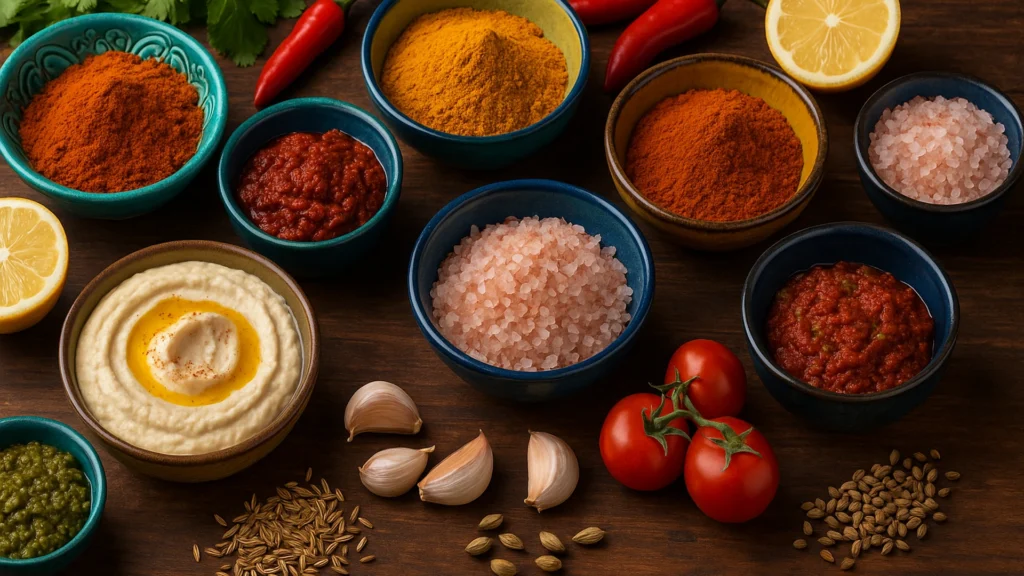
From Moroccan mint tea to Lebanese mezze platters, each region offers unique flavors while sharing the same generous spirit.
What makes these differences so special? Well, understanding them helps you create authentic experiences that honor the rich cultural traditions of the Middle East and North Africa.
Morocco and Tunisia
Bold spices and sweet elements define this region’s approach to cooking.
Cinnamon appears in meat preparations, while orange zest contributes to brightening many recipes. Food here is known to be warming and complex, perfect for bringing people together.
Lebanese and Syrian Cooking
Fresh herbs and simple ingredients take center stage in Levantine cuisine.
Olive oil, garlic, and lemon juice form the base of countless dishes. Rather than masking flavors with heavy spices, this approach emphasizes the natural taste of each ingredient.
Egyptian and Palestinian Traditions
Regional influences blend beautifully in Egyptian and Palestinian cooking. You’ll find hearty soups alongside delicate salads, plus plenty of bread for sharing.
Both regions excel at making filling meals that still feel light and fresh.
Turkish Hospitality
Lamb dishes feature prominently in Turkish cuisine, often paired with rice or bulgur. But wait, there’s more to it than just meat and grains.
Turkish cooking bridges European and Middle Eastern techniques, making flavors that feel both familiar and exotic.
Each regional style teaches the same lesson about hospitality. Food becomes the language that connects people across different backgrounds and builds lasting memories around your dinner table.
Creating Memories That Last
Middle Eastern hospitality promises dinner parties that create stories for guests to tell for years. Believe it or not, this generous hosting style builds relationships that last beyond the one meal.
When you make someone feel welcome, they carry that warmth with them. Your hospitality becomes part of how guests see you, often growing into lifelong friendships.
Through our years of hosting, we’ve seen how sharing meals changes entire evenings. And cultural food traditions of the Middle East show that hospitality means making others feel they belong.
Want to explore authentic Middle Eastern recipes yourself? Zaytoon’s Food Blog offers traditional dishes and hosting tips. Check out our recipe archive to start planning your next memorable dinner party.
